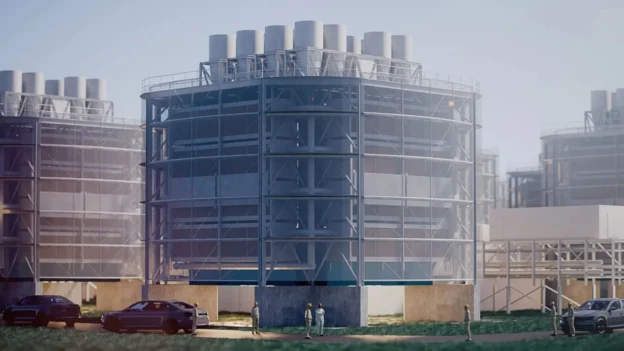Climeworks’ new technology is third-generation direct air capture and was introduced last week by the company. It has been designed to scale globally to achieve carbon removals in gigatons. The company has utilized the latest advances in research and development of filter materials and plant design to significantly improve its capacity.
It is important to remember that last May, the company put into operation the world’s world’s largest facility dedicated to direct air capture and CO₂ storage. .
At its annual Carbon Phase-out Summit in Zurich, Climeworks showcased the achievements of its new Generation 3 technology. This system has succeeded in doubling the CO₂ capture capacity per module, halving energy consumption, extending material life and reducing costs by 50%.
Generation 3: Climeworks’ new technology
Generation 3 technology incorporates structured absorbent materials that replace the packed filter beds of previous generations. These new structures increase surface contact with CO₂, allowing CO₂ to be captured and released more quickly and doubling the amount of CO₂ captured compared to previous filters. In addition, the new materials consume half the energy and are designed to last three times longer.
Climeworks has set itself the goal of reducing the costs of carbon sequestration to USD 250-350 per tonne captured and total costs to USD 400-600 per net tonne removed by 2030. This represents a reduction of up to 50% compared to current costs, which is a significant advance in its cost reduction strategy. The following video shows the company’s presentation of this technology.

Climeworks has set a goal to reduce carbon capture costs: Source: Climeworks
Large-scale testing and development
The development of this technology began in small and medium-sized test facilities in Zurich and was subsequently refined in the large-scale test facility in Basel, Switzerland. With a team of 180 people dedicated to research and development, Climeworks has optimized its system over 15,000 hours of testing and 5,000 CO₂ capture and release cycles.
The new collector concept, now featuring a modular cube design, increases capture efficiency, reduces costs and improves robustness.
What will be the first plant to use Generation 3 technology?
The first plant to use this new technology will be built in Louisiana as part of the “Cypress DAC Hub Project,” funded by the U.S. Department of Energy.
Construction will begin in 2026 and will be a significant step towards megaton capacity. In addition, Climeworks is involved in other megaton center proposals in the US. and is developing projects in Norway, Kenya and Canada, with a view to reaching gigaton capacity.
Follow us on social networks and don’t miss any of our publications!
YouTube LinkedIn Facebook Instagram X
Source and photo: climeworks

